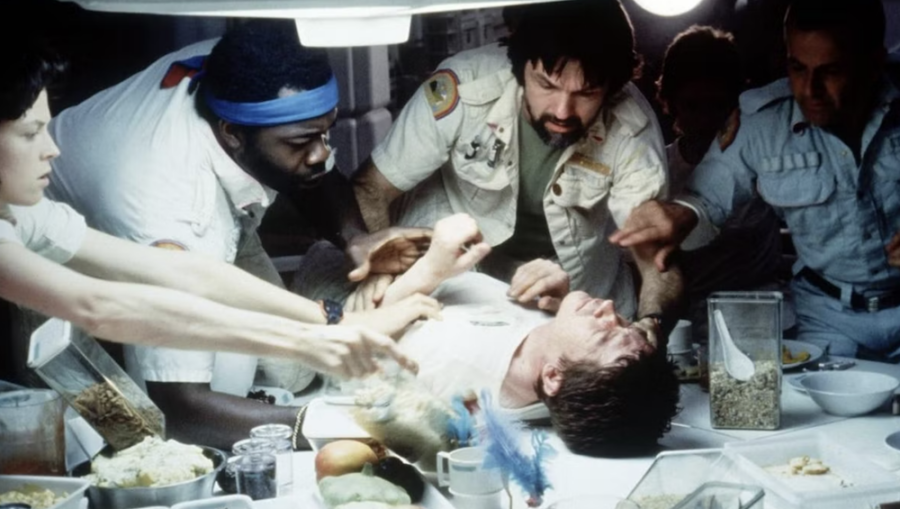See How The Alien Chestburster Scene Was Made

One of the most iconic moments in science fiction film history, or in all film history for that matter, is the chestburster scene in Ridley Scott’s 1979 Alien.
Alien itself is one of the classics of the genre, but when you think of the movie, that moment where the young xenomorph erupts out of Kane’s (John Hurt) ribcage is what comes immediately to mind.
It’s one of those pieces of film lore that, even if you haven’t seen the movie, you know about, it’s that ubiquitous. Check out this video from the Stan Winston School of visual effects that goes into great depth about how the Alien filmmakers pulled off this particular stunt.
It’s been more than 30 years since Alien changed the way movie fans approach a severe case of indigestion, but the scene still looks fantastic. The practical work is top-notch and as good as anything computer-generated that you’ll see, and the segmented body of the mechanism has a natural motion that is hard to replicate digitally.
Stephen Norrington, who made the nasty little beasty, walks you through the process step by step of how he created that writhing, wriggling creature.
The device is surprisingly simple. He used discs made of dental acrylic, some Teflon tubes, and a manufacture the de facto spine. The whole shebang was controlled via eight small cables and a couple of joysticks, which is impressive considering the range of motion and the articulation.
The end result in Alien provides a that fluid, serpentine motion that is really what makes the alien look and feel like something that is alive. As Norrington says in this video, the chestburster does so much more than simply move, it has “a real character, a real emotional component.” This is what really makes sells the whole scene.
Imagine how hokey and silly that incident would play if the model wasn’t just right. Instead of talking about one of the greatest moments in my cinematic lifetime, we could very easily be talking about one most memorable failures of science fiction special effects.
Norrington approached the task at hand from an artist’s perspective, rather than from that of a scientist or engineer. This also plays into the final feel, that it comes across as something alive, not a mechanical creation cobbled together from synthetic bits and pieces.
Over the years the Alien chestburster scene has become so well known that he even showed up for a cameo in a Mel Brooks movie. Who can forget the scene in Spaceballs where the alien, and John Hurt, show up to reprise their roles, only this time the slimy little bugger sings and dances his way down the lunch counter?











